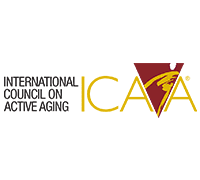What You Need to Know About Testosterone Replacement Therapy
What is testosterone replacement therapy (TRT), is it safe, and does it work? Here’s what you need to know about TRT, its benefits, effects, and how it can help you restore vitality.
If you are suffering from low testosterone,
TRT may help with the following:
TRT may help with the following:
Increased Energy
& Stamina
Increased Sexual
Performance
Performance
Increased Sex
Drive
Drive
Increased Joy &
Happiness
Happiness
Increased Muscle
Mass
Mass
What is TRT?
TRT is the acronym for testosterone replacement therapy, which is a type of hormone replacement therapy developed to restore low testosterone levels to normal in men. The TRT treatment process is similar to the concept of how type-I diabetic insulin treatment is used and administered. With TRT, the body does not produce a necessary hormone, so replacement is necessary to bring testosterone levels back to a normal level.
With TRT, synthesized testosterone administered by injection raises testosterone back to healthy levels. Besides injection, available methods (among others) of administering TRT is available in patch and cream form and is absorbed through the skin. While most males with low testosterone are over 50 years old, it is a good idea for younger men to have their testosterone levels checked, particularly if they experience symptoms.
What is Testosterone
Testosterone (commonly referred to as “T”) is a hormone found in humans and other animals. The male testicles produce testosterone, and the ovaries produce testosterone in small amounts in women.
Testosterone is the primary male sex hormone. In human males, this hormone plays an integral part in the male reproductive development of the prostate and testes. Testosterone also promotes the male secondary sexual characteristics including bone and muscle mass and body hair growth.
In males, the body increases testosterone production significantly during puberty and declines after age 30. The hormone is mostly associated with the male sex drive or sexual function and is necessary for sperm production. Additionally, testosterone affects muscle and bone mass, body fat storage, red blood cell production, and mood.
Aging’s Effect on Testosterone
Aging is a part of life that comes with its unique changes to the body, including testosterone levels in men. These changes in men’s testosterone levels include a gradual decrease with increasing age. The declining levels, however, vary significantly with each person. Research reveals that age-related decline of testosterone is associated with dysfunctions in the endocrine glands, particularly the hypothalamus, pituitary gland, and gonadal glands, also known as the hypothalamic-pituitary-gonadal (HPG) axis.
The HPG axis is responsible for a feedback loop produced by the hypothalamus that is integral to testosterone production. Understanding how declining levels vary for different men is an important consideration for determining if the condition is due to normal aging or a treatable testosterone deficiency.
Emotional Changes
Most men may not realize why their performance (sexual or physical) is not quite up to par or why changes in their appearance in certain ways may affect their mood. Emotional changes are not often discussed and yet have a significant impact on a man’s quality of life. These emotional fluctuations are difficult to ignore or forget, particularly when it concerns the sex drive.
When it comes to emotional well-being, low T can affect concentration and focus as well as cognitive ability. Declining T levels can cause irritability, stress, and depression. Healthy testosterone levels are vital for good mental and emotional health.
Many men have gradual changes in mood and mood swings, as their testosterone fluctuatesSome may believe the changes and stress they experience is due to normal aging symptoms. Many men do not realize it is a sign of low male hormone levels and need to get checked out.
Physical Changes
Many physical changes occur in men with low T levels, including decreased muscle mass, more body fat, and tender breasts. Changes such as these are damaging to the masculine form, which no doubt is extremely uncomfortable for most men.
Other body changes can include losing body hair and undesirable weight redistribution. This includes losing fat on the hips and thighs, more prominent veins in the arms and legs, and looking uncharacteristically thin.
Sexual Changes
Normally, most adults do not lose interest in sex or have diminished sexual pleasure as they get older. Increasing in age is not an inevitable reason for sexual practices to change. However, if problems in that area exist, then it may be due to physical limitations brought on by unrealized or undiagnosed illnesses or conditions, such as low testosterone levels in men.
Low levels of testosterone could affect a man’s sexual response and cause it to slow down, particularly after he turns 50 years old. Additionally, poor testosterone health could decrease his sex drive, which could also affect his attitude and self-confidence, making the problem even worse.
Testosterone is vital to multiple male sexual functions, and sex drive and performance changes with low testosterone levels. Low T can cause low libido, sexual dissatisfaction, erectile dysfunction (ED), or even infertility because of sperm count.
Changes in sexual function for men with low T levels are restorable. There are options for men looking to regain diminished T levels. A proven solution to improving all aspects of male health affected by low testosterone is Peak Performax. Booking a consultation is easier than ever before.
How Do You Know If You Have Low Testosterone?
The many symptoms that can present with low T in males are often significant and distinctive. However, some men do not always develop symptoms and learn about their condition during a routine physical or through bloodwork. The effects vary from person to person, but when symptoms do present themselves, they are particularly worrisome.

What are the Symptoms?
Low T symptoms generally negatively affect overall health and well-being, which is a common reason why men seek medical attention. Men with testosterone deficiency issues also report that symptoms often get worse over time, and drastically affect their quality of life. The most common symptoms include but are not limited to:
Why Is Low Testosterone Bad?
Low levels of testosterone often contribute to male problems like reduced sex drive and erectile dysfunction, which can take a toll on mental and emotional health. Low T can also lead to fragile bones that could break and other serious health problems. Additionally, low testosterone levels may be a sign of some other underlying medical issue.
Health concerns associated with testosterone deficiency are a significant consideration. Low T may cause long-term side effects. Particularly in men with extremely low levels, some symptoms are serious. Weakening bones, for example, can lead to osteoporosis and broken or fractured bones. Research also shows low testosterone is linked to increased risk of death from heart disease and other conditions.
How is TRT Used in Necessary and Elective Medical Procedures?
Medically, TRT is used to treat a condition known as hypogonadism, which happens when little to no hormones are produced by the sex glands. The condition presents as either primary or secondary. With primary hypogonadism, problems with the gonads cause low T counts while problems with the hypothalamus (pituitary gland) cause secondary hypogonadism.
Non-medical or elective uses of TRT benefit people in other ways such as weight loss, enhanced energy, better sexual performance, increased athletic endurance, and gaining muscle mass. Additionally, increased muscle strength in middle-aged and older males is significantly shown in research studies.
How Does TRT Work and How is It Administered?
The TRT process is ongoing, and typically takes anywhere from three to six months to show progress and start working. It is gradual. The process works by helping the body get back to producing testosterone in a healthy range. Results show slow reversal of low T symptoms in men. The physician monitors the patient closely to determine a steady baseline dose of TRT, which then most men notice energy level improvements, increased vitality, and better quality of life.
TRT administration methods include injection, topical, cheek patches, implants, oral, or intranasal. The treatment is available by prescription only. If symptoms are consistent with low T, a physician completes the physical exam, medical history, and lab tests and then prescribes the therapy.
How Much Does TRT Cost and Where to Get It?
Typically, costs for TRT runs as low as $100 per month.
However, costs for TRT treatments depend on the type of prescription and whether its name brand of generic. Health insurance can cover part of the cost. Additionally, total cost may be different based on geographical locations and method of administration.
What are the benefits, risks, and side effects of TRT?
FAQ’s and Myths of TRT
Low T symptoms generally negatively affect overall health and well-being, which is a common reason why men seek medical attention. Men with testosterone deficiency issues also report that symptoms often get worse over time, and drastically affect their quality of life. The most common symptoms include but are not limited to:
Frequently asked questions include:
Myths include:
Does TRT Affect Energy?
Low testosterone levels affect energy levels in a negative way, such as causing decreased endurance, chronic fatigue, reduced physical performance, and decreased mental function. However, TRT can restore energy levels to normal because it restores testosterone to normal levels. Many patients report that TRT gives them an energy boost and makes them feel a bit more energetic.
Can TRT Fix Erectile Dysfunction (ED)?
While some men with low T report restored sex drives when on TRT, eliminating ED often needs supplementation with ED meds. The treatments do not necessarily improve erections in men with that being the only symptom. (ED)?
Some research studies reveal that TRT can help with ED by improving issues like fatigue and low libido. However, TRT research related to ED continues. One study shows that 40-60% of men with both low T and ED reported improvements.
How Long Do I Need to Take TRT?
When considering TRT, it is important to understand that the treatments for boosting testosterone levels. But it is not designed to eliminate or treat underlying causes of low T. As of now, TRT treatments must be continued indefinitely because it is not a cure for low testosterone. If the treatments are discontinued, symptoms may return. TRT may be a life-long treatment protocol for some.
Conclusion
The aim and purpose of testosterone replacement therapy is to medically improve signs and symptoms presented by patients related to testosterone deficiency. As noted, low T commonly causes reduced libido, erectile dysfunction, sad/depressed mood, anemia, muscle loss, and bone mass loss. However, TRT works by increasing the body’s serum testosterone levels to normal ranges.
TRT treatments were first used over 70 years ago, which lead to various formulations and methods of administration. Today testosterone replacement therapy is widely used for treating men with symptomatic and non-symptomatic hypogonadism with well-documented benefits.
Want to learn more about how testosterone replacement therapy can restore vitality and energy? Connect with us today.




















